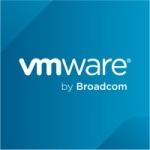The thing that is most valuable to us is the desktop console application CA Introscope Workstation. It is very easy to use. We tried other tools before (IBM Tivoli, for example), but the console was very difficult to use. CA Introscope Workstation is the first tool that was quickly embraced by our developers and became one of the tools they use on a daily basis. This is very important because, in reality, only developers can really interpret the metrics collected by the tool.
















Agreed on Feature value & Improvement areas. We had a much poorer experience with Customer Service & Support aspects, though. Frankly, a lack of good service & support weighed heavily on our move away from CA APM.